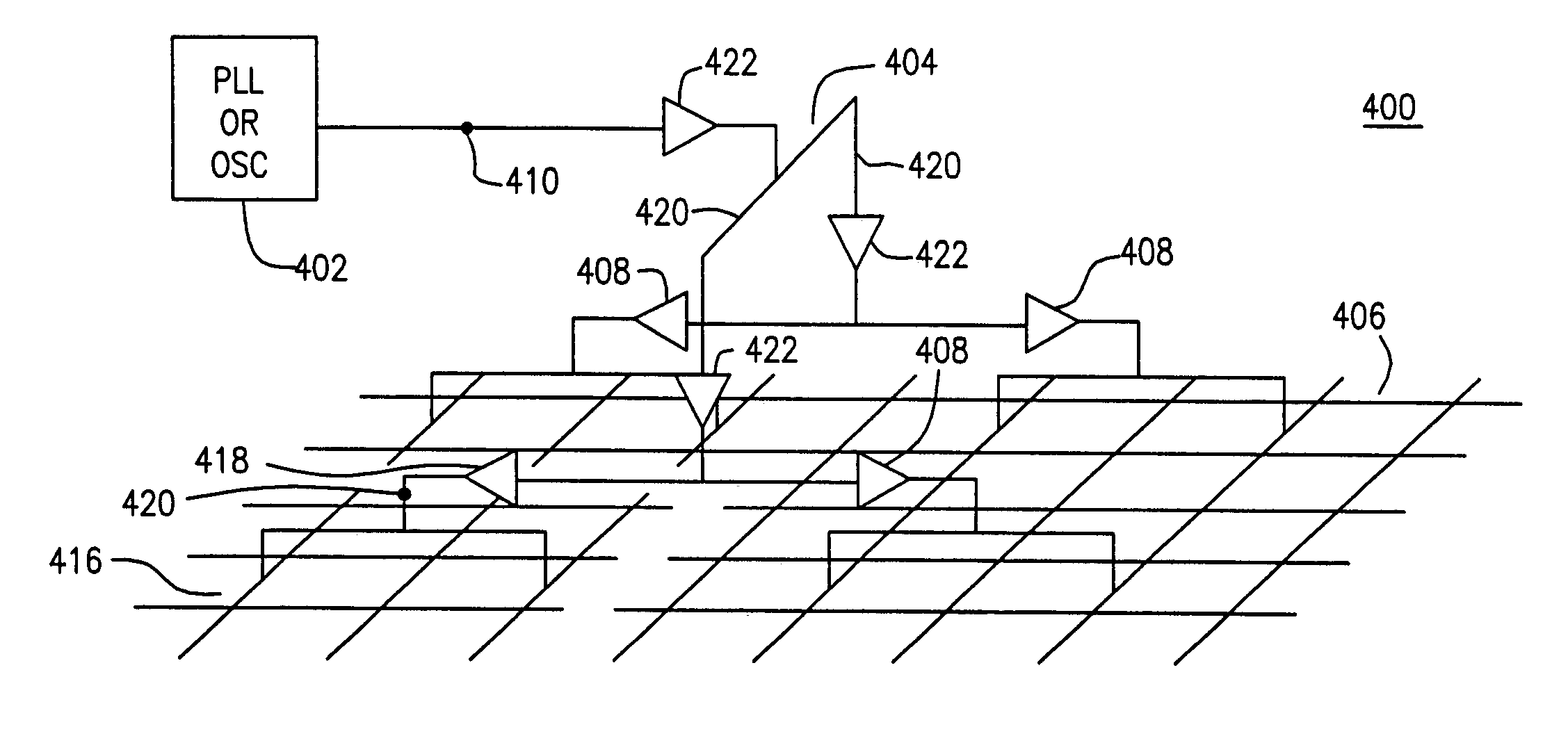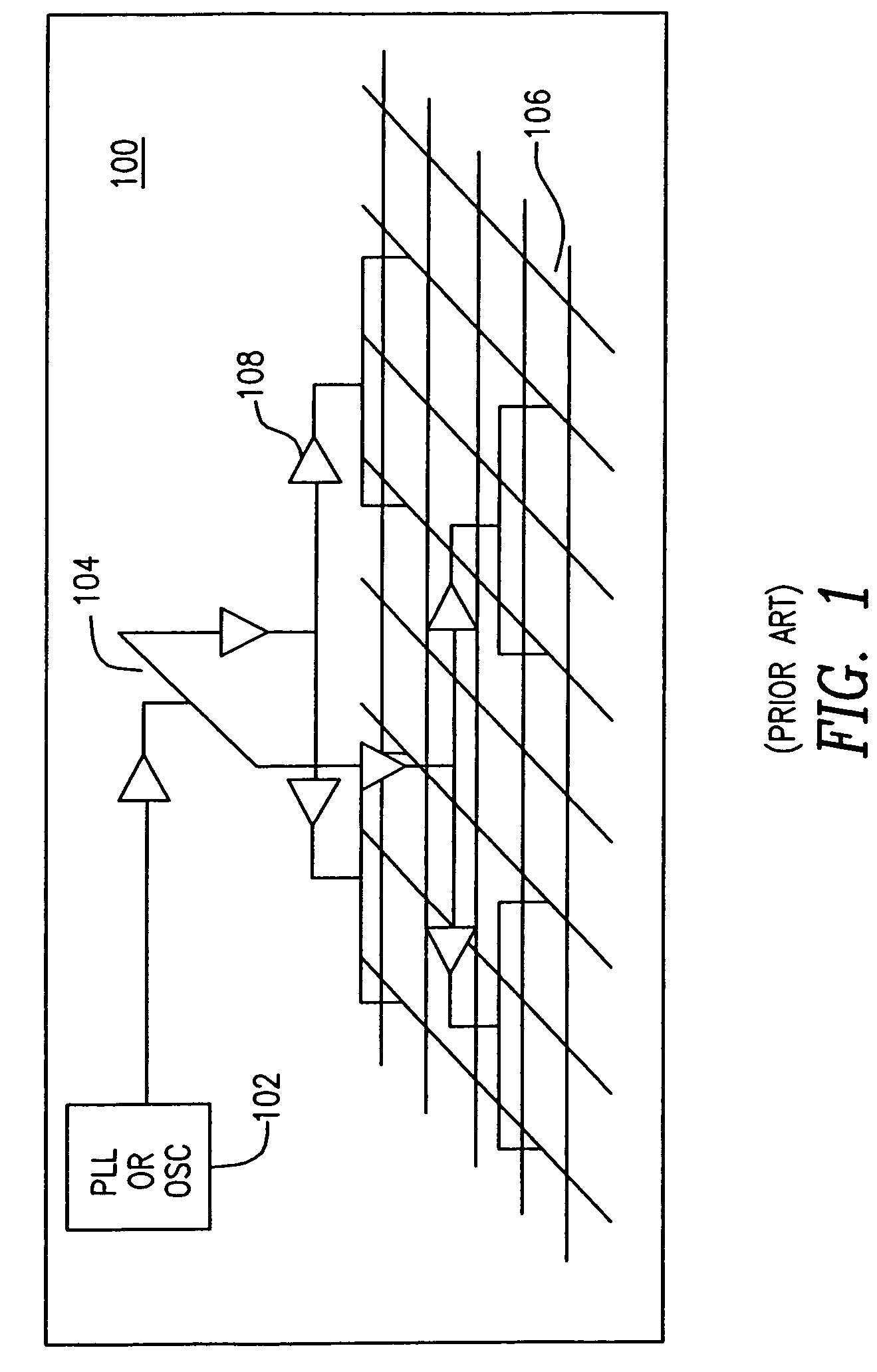Methods and apparatus for managing clock skew
a technology of clock skew and apparatus, applied in the direction of generating/distributing signals, pulse techniques, instruments, etc., can solve the problems of clock skew, clock skew, clock skew,
- Summary
- Abstract
- Description
- Claims
- Application Information
AI Technical Summary
Benefits of technology
Problems solved by technology
Method used
Image
Examples
Embodiment Construction
[0028]Herein, a signal generator may be implemented using a PLL, an oscillator or other device capable of generating a periodic signal. Herein, a final buffer may be a clock buffer located at or near a junction between a clock tree and a clock mesh. However, the term “final buffer” is not limited to the foregoing description. Referring now to the drawings, wherein like numerals indicate like elements, there is shown in FIG. 4 a semiconductor device 400, such as an LSI circuit.
[0029]FIG. 4 is a schematic diagram of a circuit 400 in accordance with one or more embodiments of the present invention. Circuit 400 includes PLL, oscillator or other clock source 402, clock tree 404, a first clock mesh 406, and a second clock mesh 416. Oscillator 402 is a conventional device for providing a periodic signal, and is known in the art. Clock tree 404 includes a network of conductive segments 420, clock buffers 422, and final buffers 408 and 418 to fan the clock signal 410 to multiple points on cl...
PUM
 Login to View More
Login to View More Abstract
Description
Claims
Application Information
 Login to View More
Login to View More - R&D
- Intellectual Property
- Life Sciences
- Materials
- Tech Scout
- Unparalleled Data Quality
- Higher Quality Content
- 60% Fewer Hallucinations
Browse by: Latest US Patents, China's latest patents, Technical Efficacy Thesaurus, Application Domain, Technology Topic, Popular Technical Reports.
© 2025 PatSnap. All rights reserved.Legal|Privacy policy|Modern Slavery Act Transparency Statement|Sitemap|About US| Contact US: help@patsnap.com



